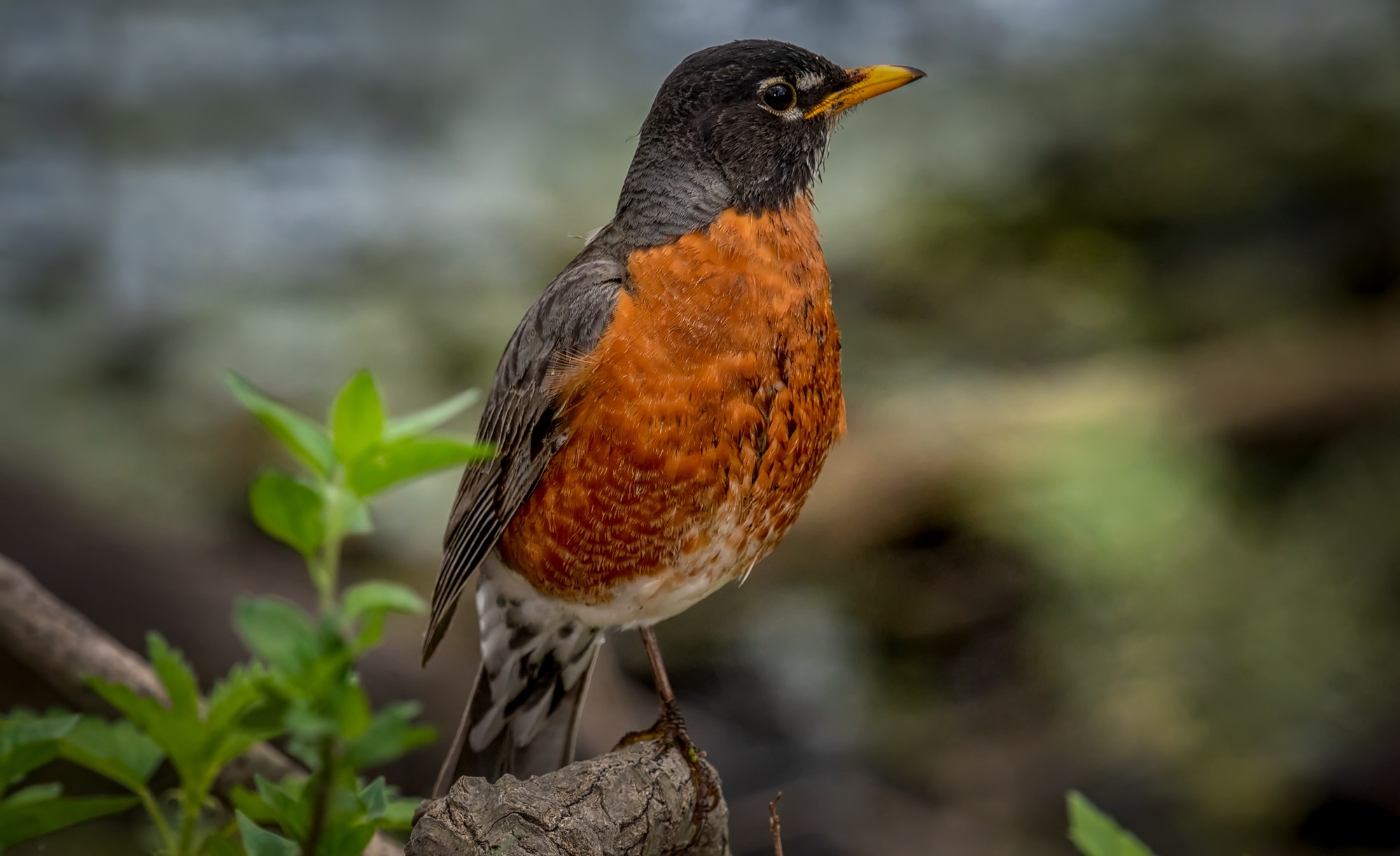Ready to embark on an exciting journey into the world of a remarkable bird, the American Robin? You might have seen this friendly feathered creature hopping around your backyard or heard its cheerful song at dawn. But there’s so much more to discover about the American Robin, scientifically known as Turdus migratorius.
In this adventure, we’ll uncover the secrets of the American Robin. From its bright red belly that lights up like a sunrise to its sweet tunes that fill the air, this bird is full of surprises. Did you know that despite its name, it’s not a Robin? That’s right! It’s part of the Thrush family, cousins to the Bluebirds.
But why should we care about these birds? Well, they’re not just beautiful; they play a crucial role in our ecosystem. They’re like nature’s gardeners, helping plants grow by spreading seeds. Plus, watching them can be super fun and even a bit like solving a mystery. You’ll learn how to spot them, understand their behaviors, and maybe even make your backyard a welcoming place for them.
So, grab your binoculars, put on your explorer’s hat, and let’s get ready to meet one of nature’s most fascinating birds. Who knows? You might just become the next great birdwatcher or an expert on the American Robin!
What Makes the American Robin Special?
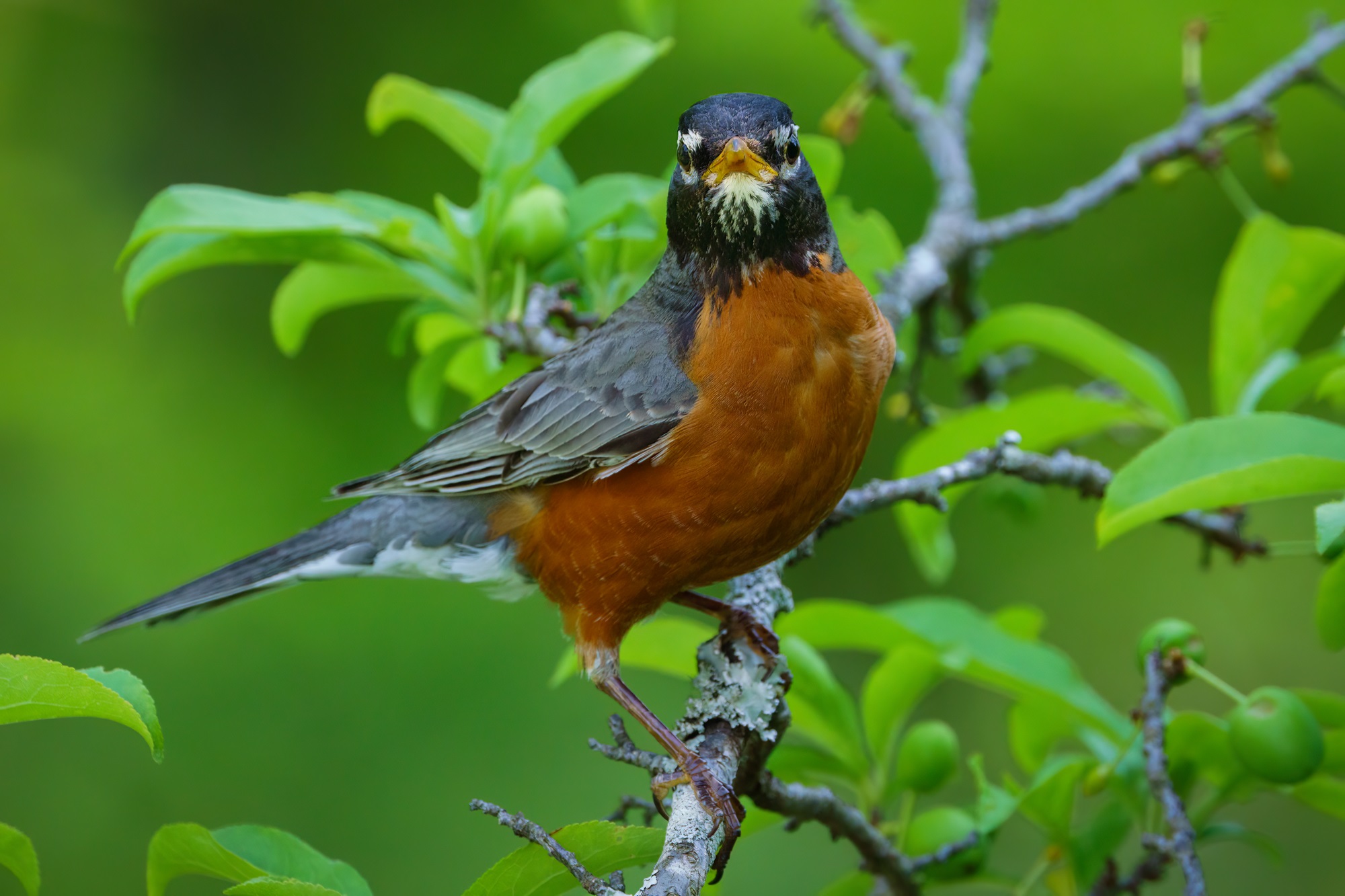
Vibrant Colors: One glance at the American Robin, and you’ll notice its striking reddish-orange chest. This bright splash of color makes it a standout in any garden. But that’s not all – its back is a beautiful shade of gray to black, perfect for blending in with the trees.
Melodious Singer: Wake up early and you might hear the American Robin’s song. It’s one of the first birds to start singing at dawn, filling the air with melodious tunes. Their song is more than just pleasant to our ears; it’s a way robins communicate with each other.
A Traveler at Heart: The American Robin is known for its migratory habits. Although some stay put all year in milder climates, many travel great distances as the seasons change. This journey is a testament to their strength and adaptability.
Fascinating Diet: These birds have a varied diet, enjoying everything from fruits to insects. Watching a Robin hunt for worms is like seeing a tiny detective at work – they’re patient, observant, and quick!
Social and Friendly: American Robins are known for their social nature. They often gather in large flocks, especially in winter, showcasing their communal behavior. This makes them a delightful sight, especially against snowy landscapes.
Nesting Wonders: The nesting habits of the American Robin are quite intriguing. They are skilled at building nests, using twigs, grass, and even paper, often found in trees or on building ledges. The blue eggs they lay are just as fascinating, adding a pop of color to their carefully constructed homes.
A Sign of Spring: Often considered a harbinger of spring, the return of robins from their winter migration is a sign that warmer days are ahead. Their presence brings joy and a reminder of the changing seasons.
Interactive Diagram: Parts of an American Robin
Beak: Click here to find out how the Robin uses its beak not just for eating, but also for building nests and singing.
Eyes: Ever wonder how well Robins can see? Click to learn about their vision and how it helps them find food and navigate.
Reddish-Orange Breast: This signature feature isn’t just for show. Find out what it tells other Robins and how it changes with seasons.
Wings: Click to understand the structure of Robin’s wings and how they’re designed for both long flights and quick maneuvers.
Legs and Feet: Learn about the strength and agility of the Robin’s legs and feet, crucial for hopping on the ground and perching on branches.
Tail: The tail isn’t just for balance. Discover its role in flight and communication.
Feathers: Click here to explore the different types of feathers a robin has and how they keep it warm, dry, and airborne.
Fun Facts about American Robins
Early Birds: American Robins are often the first birds you hear singing at dawn, earning them the nickname “early birds.”
Blue Eggs: They lay beautiful blue eggs, sometimes referred to as “robin’s egg blue,” a color name inspired by these eggs.
Worm Whisperers: Robins can hear worms moving underground. That’s how they’re so good at finding them for breakfast!
Long-Distance Fliers: Some American Robins migrate over 3,000 miles between their breeding and wintering grounds.
Speedy Singers: Their song can reach up to 30 notes per second, making it not just melodious but impressively rapid.
Winter Survivors: Unlike many birds, American Robins can survive harsh winters, even in temperatures as low as -40 degrees Fahrenheit.
Territorial Dancers: During the breeding season, males perform a ‘territory dance’ to ward off rivals and attract mates.
Fruit Lovers: In winter, their diet shifts more to fruit, which can sometimes ferment and make the birds a bit tipsy!
Multiple Broods: They can have up to three broods in one year, making them busy parents during the breeding season.
Urban Adapters: American Robins have adapted well to urban environments, making the most of gardens, parks, and lawns.
Understanding the Life Cycle of the American Robin
Eggs to Sky: A Journey from Nest to Flight
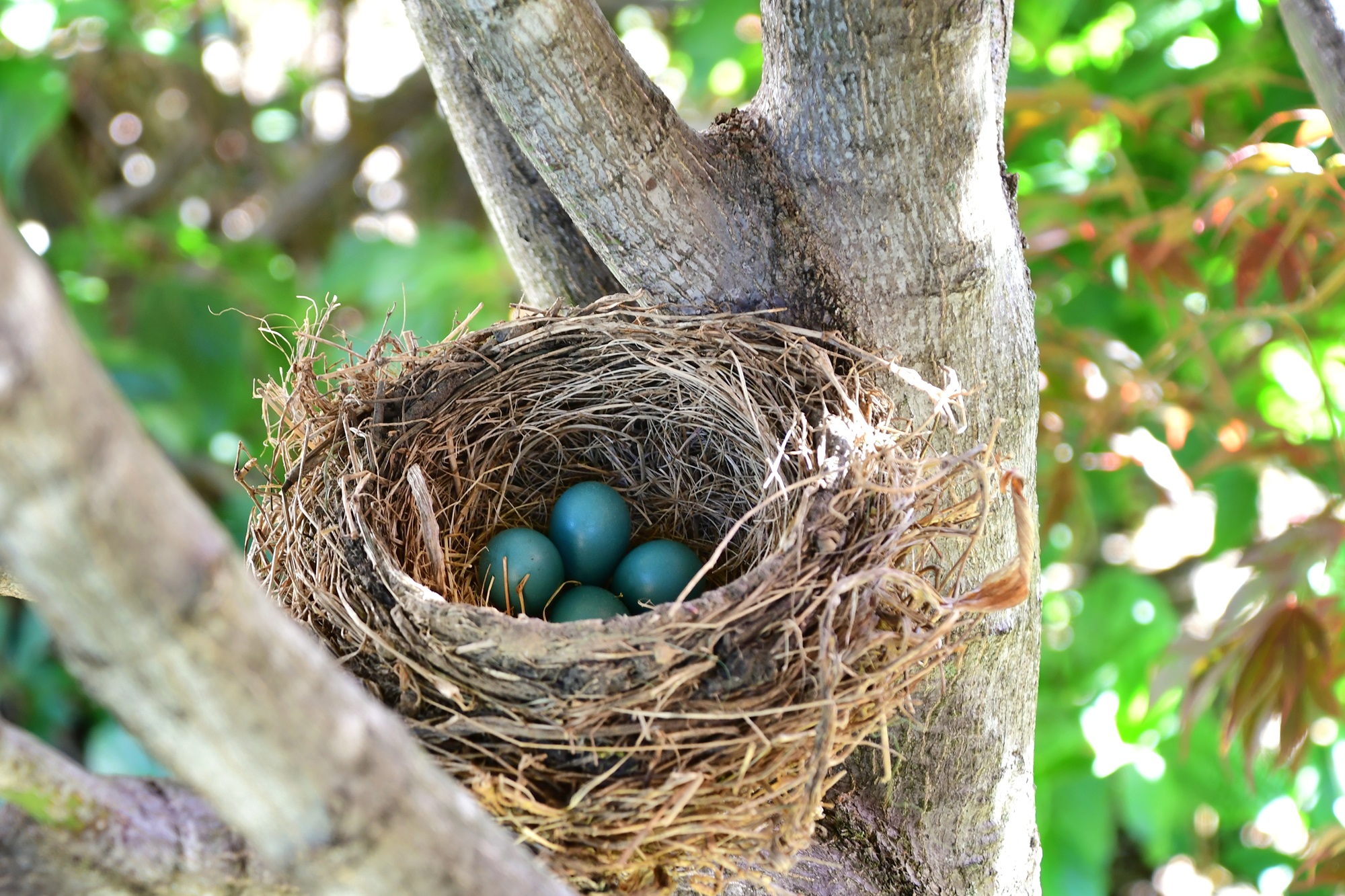
The life cycle of the American Robin is a captivating tale of growth and development, beginning as a tiny egg in a carefully constructed nest. Here’s a snapshot of this journey:
Nesting and Egg Laying: The female Robin builds a cup-shaped nest using grass, twigs, and mud. She then lays a clutch of 3-5 beautiful blue eggs.
Incubation: For about two weeks, the mother Robin incubates her eggs, keeping them warm until they hatch.
Hatching: The eggs hatch into tiny, helpless chicks that rely entirely on their parents for food and protection.
Feeding and Growing: Both parents are busy feeding the chicks a diet of worms and insects. The chicks grow rapidly, developing feathers and strength each day.
First Flight: After about two weeks, the fledglings are ready for their first flight, a critical moment in their life. This initial flight marks their transition from nestlings to juvenile birds.
Independence: Soon after their first flight, they start to venture out on their own, learning to find food and navigate their environment.
Seasonal Changes: How They Adapt Throughout the Year
The American Robin’s life cycle is closely intertwined with the seasons, showcasing their remarkable adaptability.
Spring: The breeding season begins. Robins are busy with mating, nest-building, and raising their young.
Summer: Late in the summer, after the breeding season, robins start to molt, shedding old feathers and growing new ones.
Fall: As the temperature drops, their diet shifts more towards fruits and berries. They begin to gather in flocks, preparing for migration or adapting to the colder weather.
Winter: Robins either migrate to warmer areas or stay put and endure the winter. They fluff up their feathers to stay warm, and they rely on fruit for sustenance.
How to Spot an American Robin
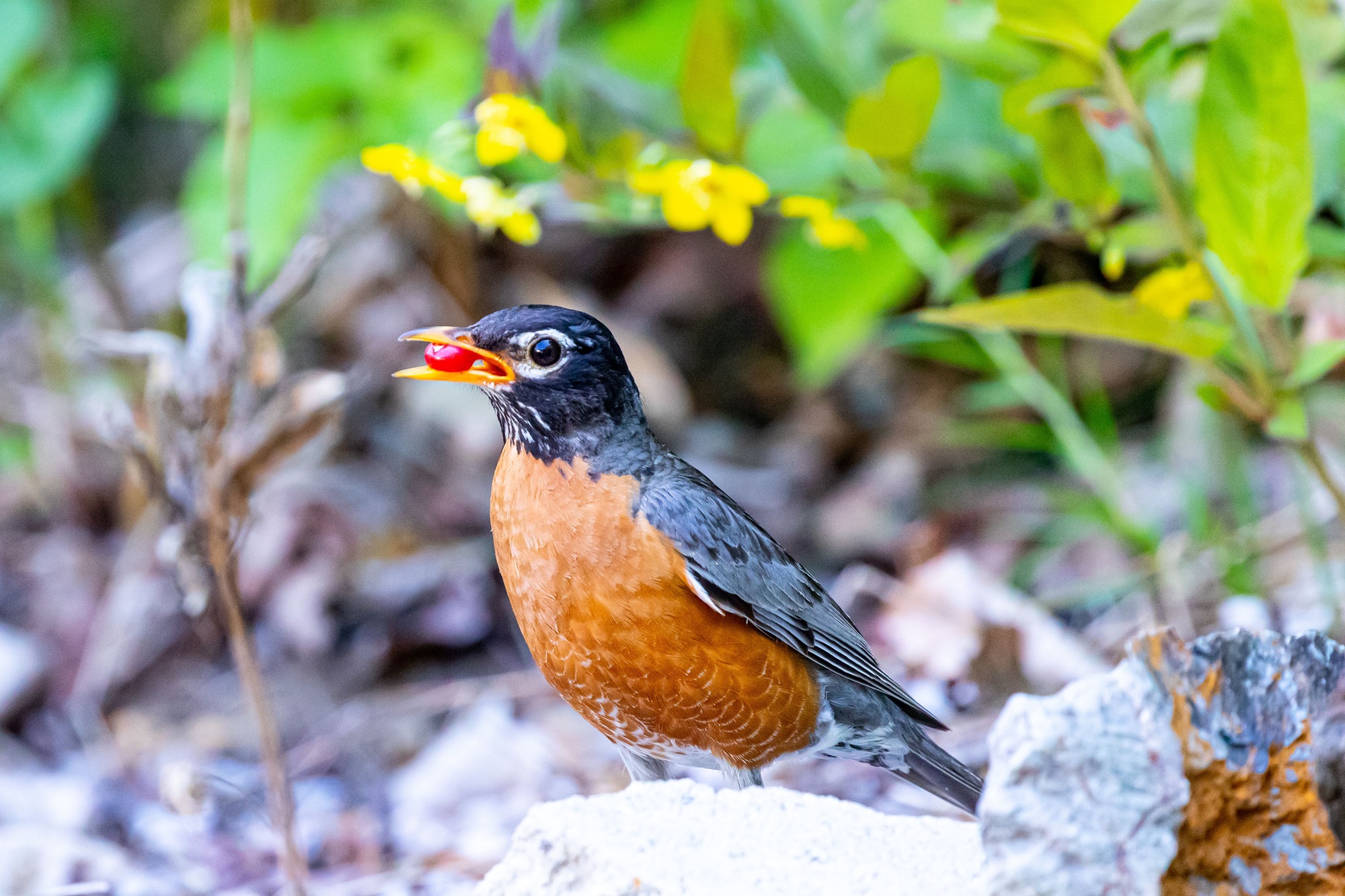
Identifying an American Robin, Turdus migratorius, is both fun and easy once you know what to look for. Here’s a visual guide to help you spot these charming birds in your area:
Look for the Reddish-Orange Belly: The most distinctive feature of an American Robin is its bright reddish-orange chest and belly. This vibrant coloration is hard to miss and is a key identifier.
Notice the Dark Back and Head: Contrast the bright belly with its dark gray to black back and head. This coloration helps them blend into their surroundings when perched in trees.
Observe the Size and Shape: Robins are medium-sized birds with a round body, long legs, and a fairly long tail. They’re often seen hopping on the ground or perched upright in trees.
Listen to Their Song: American Robins have a melodious, warbling song. Listening to their distinctive tunes, especially at dawn, can help you locate them.
Check Their Habitat: They are adaptable and can be found in various habitats, including forests, parks, gardens, and even urban areas. Look for them foraging on the ground or nesting in trees.
Seasonal Changes: Remember, their appearance can change slightly with the seasons, and they may be more or less visible in your area depending on the time of year.
Caring for Our Feathered Friends
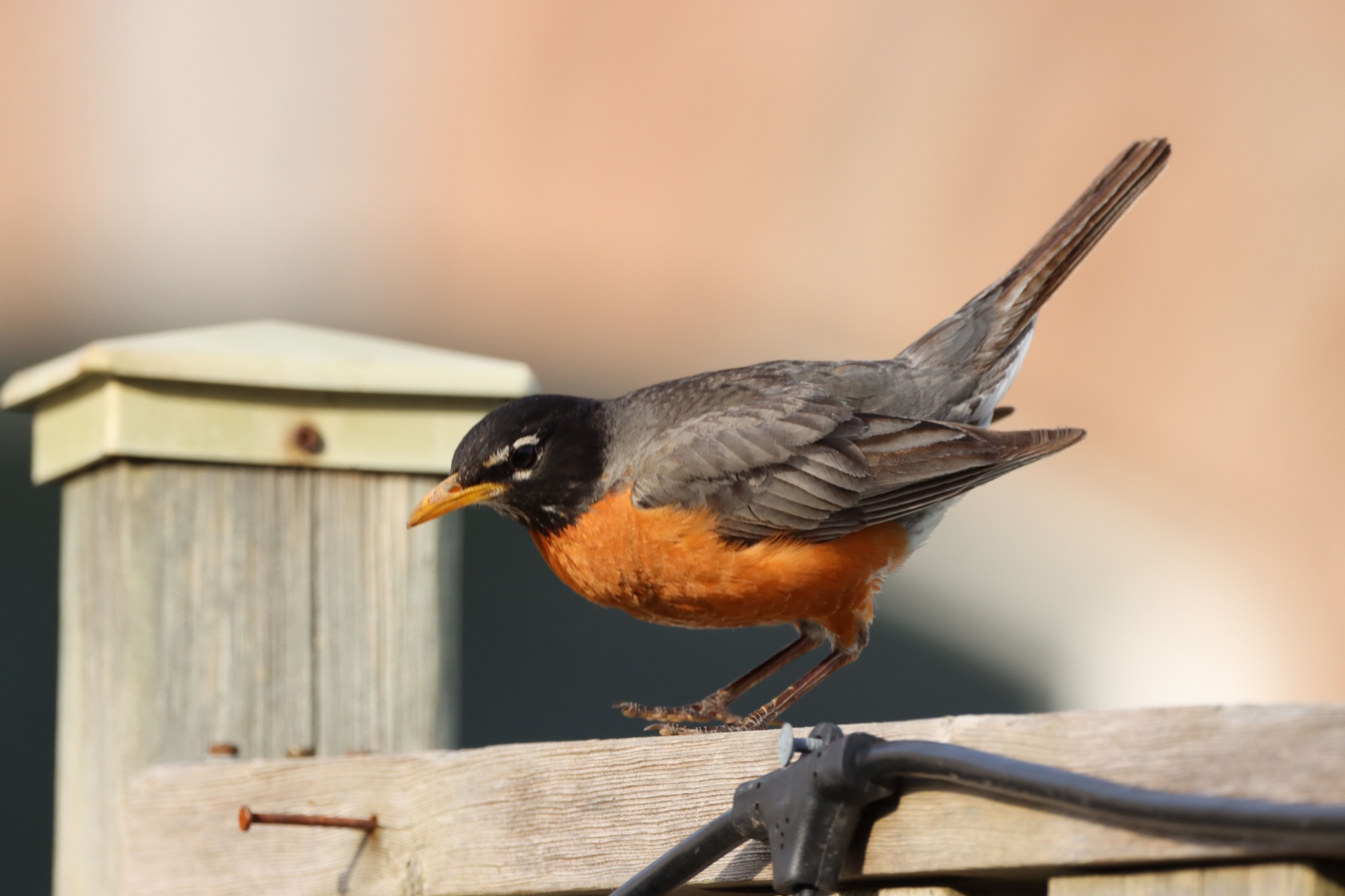
Provide Natural Food Sources: Plant native shrubs and trees that produce fruits and berries, such as hawthorns, chokeberries, and crabapples. These natural food sources are perfect for Robins, especially in winter.
Keep a Water Source: Install a bird bath or a shallow water dish. Robins need fresh water for drinking and bathing. Make sure to clean and refill the water regularly.
Offer Safe Nesting Spots: Robins build nests in trees, shrubs, and even on building ledges. You can encourage them by leaving some natural materials like twigs, grass clippings, and mud in your garden for them to use.
Avoid Pesticides and Chemicals: Chemicals used in gardens can harm Robins and other wildlife. Opt for natural pest control methods to keep your garden safe for birds.
Keep Your Cat Indoors: Cats are natural predators of birds. To protect Robins and other bird species, it’s best to keep pet cats indoors, especially during the nesting season.
Create a Diverse Habitat: Include a variety of plants, trees, and shrubs in your garden. A diverse habitat offers shelter, food, and nesting sites for Robins.
Leave Some Leaf Litter: Robins forage for insects and worms in leaf litter. Leaving a small area of your garden a little wild can provide them with a great natural feeding ground.
Put Out Mealworms: During breeding season or in harsh weather, supplementing their diet with mealworms can be a big help. Place them in a ground feeder or a shallow dish.
Observe Quietly: Enjoy watching Robins from a distance. Minimize loud noises and sudden movements that could startle them.
FAQs about American Robins
1: What do American Robins eat?
American Robins primarily eat insects, worms, and various fruits. Their diet changes seasonally, focusing more on fruits in the winter.
2: How long do American Robins live?
On average, American Robins live for about 2 years, but they can live longer in the wild, with some reaching 6 years or more.
3: Where do American Robins build their nests?
They typically build their nests in trees, shrubs, and sometimes on building ledges, using twigs, grass, and mud.
4: Can American Robins see well at night?
They have better vision during the day. Their vision at night isn’t as strong, which is why they are primarily active during daylight hours.
5: Do American Robins migrate?
Yes, many American Robins migrate to find warmer climates in the winter, though some populations in milder regions may stay put year-round.
6: How can I tell a male Robin from a female?
Male and female American Robins are similar, but males typically have brighter, more vivid coloring, especially on their red breasts.
7: Why do American Robins sing?
They sing to establish territory, attract mates, and communicate with other Robins. Their song is most prominent at dawn.
8: When do American Robins lay eggs?
They usually lay eggs in the spring. The exact timing can vary depending on the climate and location.
9: How many eggs do American Robins lay?
A typical clutch size is 3 to 5 eggs. They may have several broods during the breeding season.
10: What can I do to help protect American Robins?
Providing a bird-friendly environment, avoiding pesticides, offering natural food sources, and keeping cats indoors are great ways to help protect them.
References and External Links
All About Birds, Cornell Lab of Ornithology: A Comprehensive Resource for Information on American Robins and other bird species. Visit All About Birds
The National Audubon Society: Offers detailed guides and articles about American Robins, their habitats, and behaviors. Explore Audubon Society
Birds of the World: Cornell Lab of Ornithology: Provides in-depth scientific data and research on the American Robin. Discover Birds of the World
eBird: A global birdwatching community where you can record your bird sightings, including American Robins, and contribute to citizen science. Join eBird
The National Wildlife Federation: Learn about how to create a wildlife-friendly garden that welcomes American Robins. National Wildlife Federation
Bird Watching HQ: Tips and tricks for birdwatching and attracting birds like the American Robin to your backyard. Bird Watching HQ
Journey North: Track the migratory patterns of American Robins and participate in their annual survey. Journey North Website
BirdLife International: Provides global perspectives on bird conservation, including efforts to protect species like the American Robin. BirdLife International

